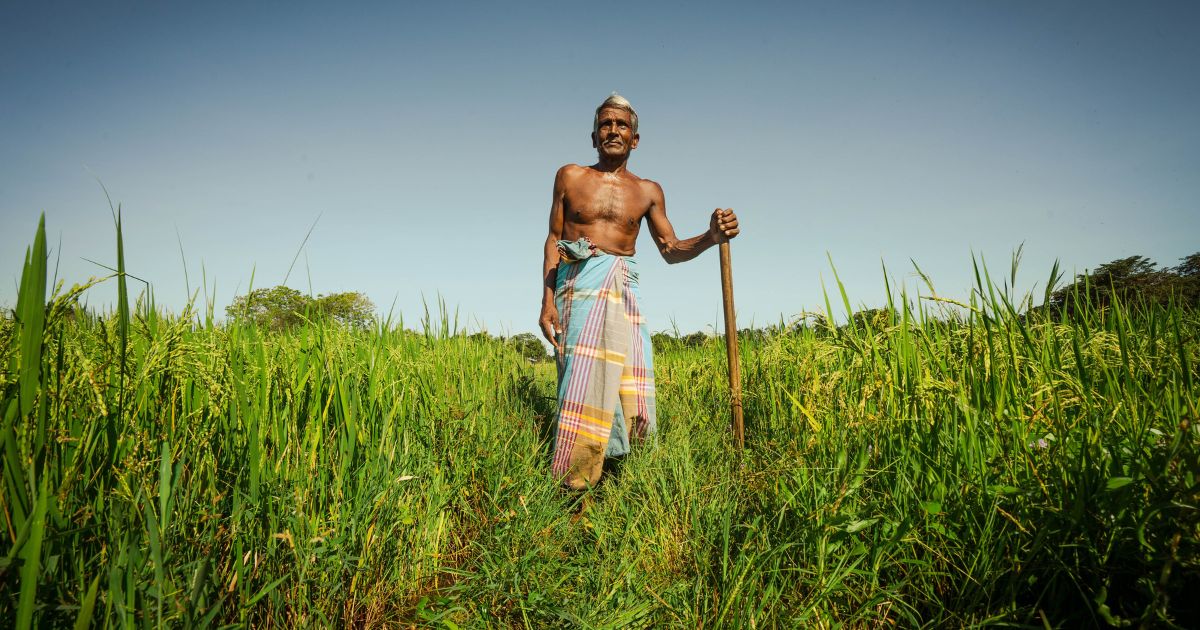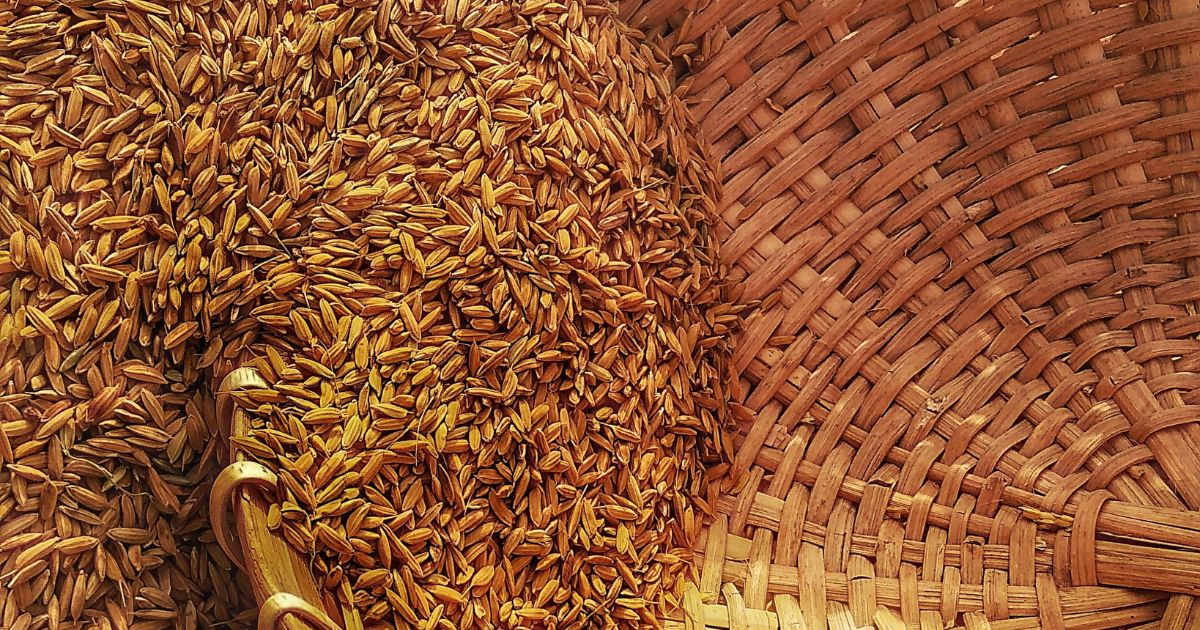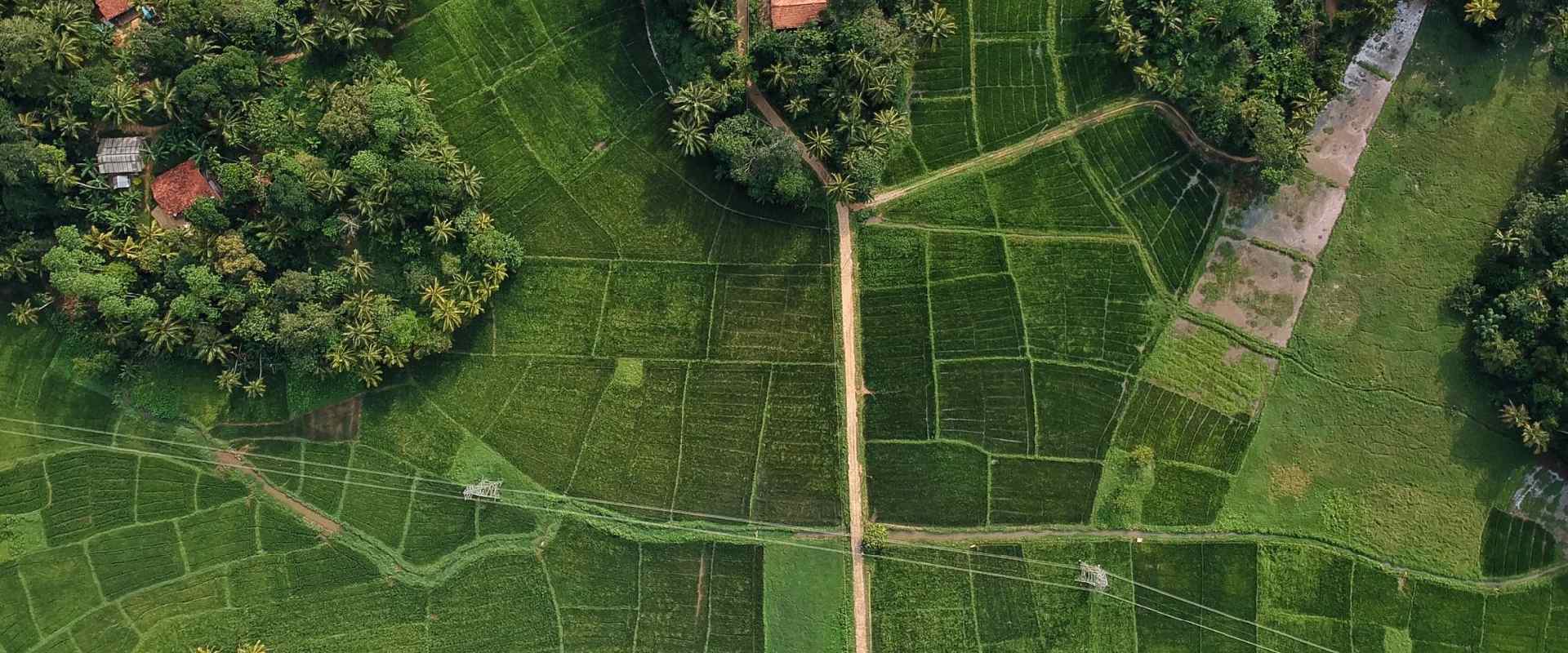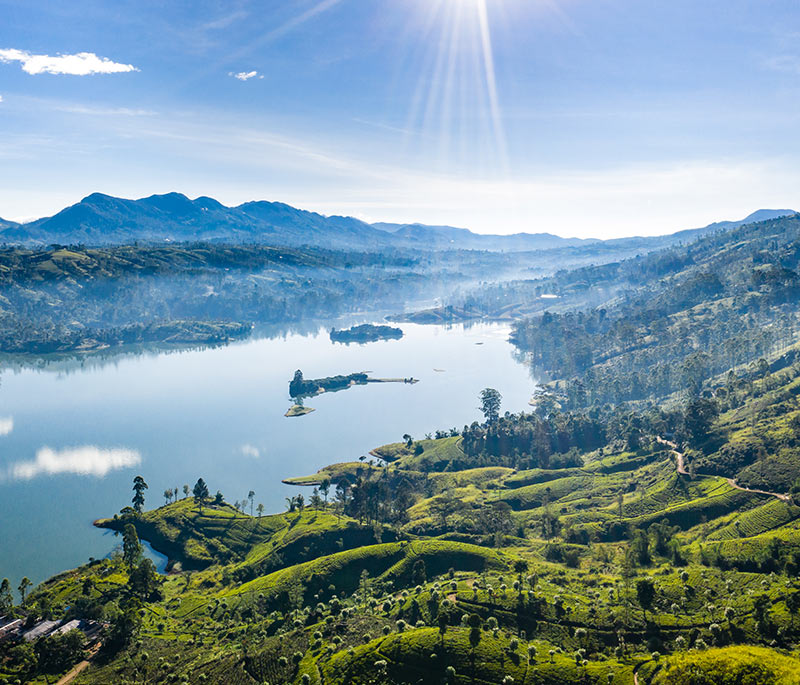The Essential Grain
The skies awaken as darkness turns to light. The morning rays of sun touch the tops and peek through the coconut trees, creating shadows of play. Across the paddy fields, the atmosphere shines golden and bright.
The day has begun.

Rice is an important crop of Sri Lanka and occupies a large percentage of land. The land on which farmers cultivate rice is referred to as a ‘kumbura’ or ‘ketha’ in our native tongue. These blocks of land are prepped in advance, ensuring the ground is levelled and hydrated well to match the needs and requirements of the rice seeds that are to be sowed. Presently, preparation is done by both machinery in some areas and water buffaloes in others.
It is a known fact that ancient and traditional farmers were self-sufficient and our little island was amongst the foremost paddy exporters in the world. The kings that reigned in the yesteryears laid an honourable focus on agriculture and therefore the cultivation of rice was nurtured in a completely organic manner. There are two cultivation seasons namely; Maha and Yala which are synonymous with the two monsoons experienced island-wide. The Maha Season falls during the North-east monsoon from September to March. The Yala season is effective during the period from May to the end of August.
Paddy cultivation is highly sensitive towards water shortages as the rooting earth is in need of a steady flow and supply of water. If there’s a shortage, the supply is then disturbed and often tends to drop below the required average. The rice seedlings also require varying nutritional factors throughout the various stages of its lives.
According to the Rice Research and Development Institute, approximately 1.8 million farm families are engaged in paddy cultivation island-wide, and produce 2.7 million ton of rough rice annually, satisfying around 95% of the domestic requirement.

While the idea of paddy cultivation may seem effortless and laid back, there’s a great deal of rigour, strength, patience and discipline involved. Farmers often tend to work nearly 12 hours a day in warm temperatures, tending to each ketha, ensuring a steady water supply evenly spread amongst the entire field and also minding the water buffaloes and keeping off pests. It all begins with a reverent vow to the gods, to ensure a successful crop and harvest. Tillage of the land, crop and seeding continues, fencing if necessary and then crop protection throughout its growth season.
The occasional breeze brings about a cooling sensation; yet otherwise it’s all sweat and effort for the farmers. As noon sets, and the temperature reaches its peak, there’s a halt in work. Sitting beneath a roof of dried coconut leaves and a little makeshift hut made of mud, lunch is served. It is often a combination of rice and three to four vegetables.
Our island’s culture is tied to the tradition of rice farming and although there are new advances in the process of cultivation, at the root of it all the nuances remain the same. Crop health and management for the next couple of months is essential. As it grows and continues to flourish, it charms pests and diseases of various kinds. Traditional practices of protecting the crop include varying methods based on astrology, chanting of verses and performing offerings to the gods.
An approximate period of 115-120 days later, the rice crops are mature and ready to harvest. The fields turn from an emerald green to a dusky dry golden hue. This is also performed either manually or mechanically. Manual harvesting is highly labour intensive and requires 40 to 80 man-hours per hectare (one hectare equals 10,000 square metres). Traditionally, harvesting was complemented by the farmers signing ‘goyam kavi’ – folk songs and poetry.
Post-harvest, there’s drying, storing, milling and finally processing the crop. Traditional rice varieties across our little island amount to over 2000, each with varying nutritional and medical values. At our resorts, you’ll come across some of the well known varieties including suwandel, sudu samba, basmati, and kuruluthuda.
(Source – Dept of Agriculture)





